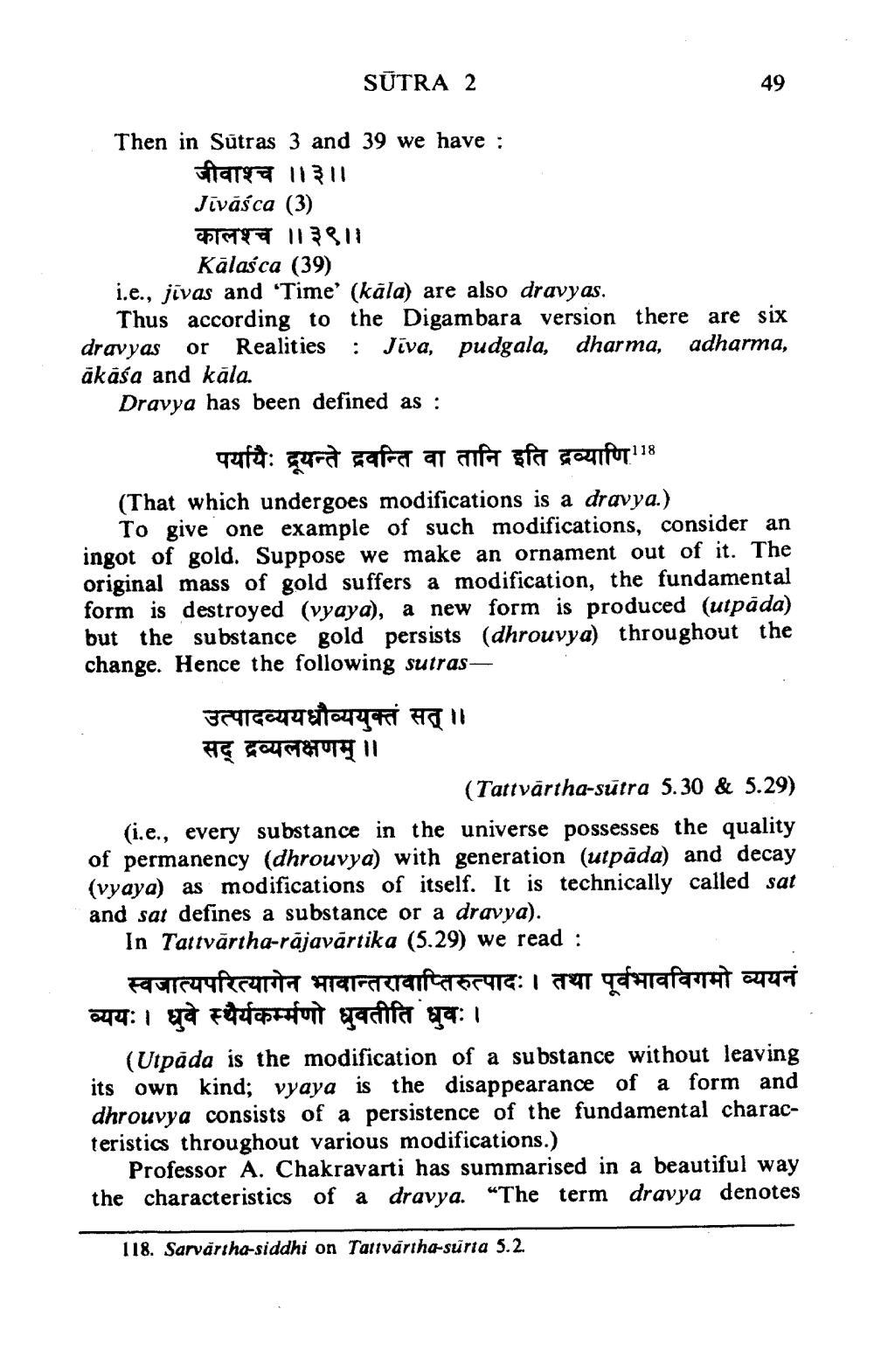________________
SUTRA 2
Then in Sūtras 3 and 39 we have :
at 11311 Jivāśca (3) ĐT 81 || 313
Kālasca (39) i.e., jivas and 'Time' (kāla) are also dravyas.
Thus according to the Digambara version there are six dravyas or Realities : Jiva, pudgala, dharma, adharma, äkaśa and kāla.
Dravya has been defined as :
पर्यायैः यन्ते द्रवन्ति वा तानि इति द्रव्याणि118 (That which undergoes modifications is a dravya.)
To give one example of such modifications, consider an ingot of gold. Suppose we make an ornament out of it. The original mass of gold suffers a modification, the fundamental form is destroyed (vyaya), a new form is produced (utpada) but the substance gold persists (dhrouvya) throughout the change. Hence the following sutras
उत्पादव्ययधौव्ययुक्तं सत्॥ सद् द्रव्यलक्षणम् ॥
(Tattvärtha-sutra 5.30 & 5.29)
(i.e., every substance in the universe possesses the quality of permanency (dhrouvya) with generation (utpäda) and decay (vyaya) as modifications of itself. It is technically called sat and sat defines a substance or a dravya).
In Tattvārtha-rajavārtika (5.29) we read :
स्वजात्यपरित्यागेन भावान्तरावाप्तिरुत्पादः । तथा पूर्वभावविगमो व्ययनं व्ययः। धुवे स्थैर्यकर्मणो धुवतीति धुवः ।
(Utpada is the modification of a substance without leaving its own kind; vyaya is the disappearance of a form and dhrouvya consists of a persistence of the fundamental characteristics throughout various modifications.)
Professor A. Chakravarti has summarised in a beautiful way the characteristics of a dravya. "The term dravya denotes
118. Sarvartha-siddhi on Tarrvärtha-suria 5.2.




